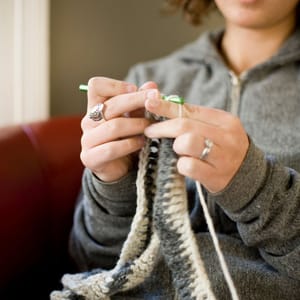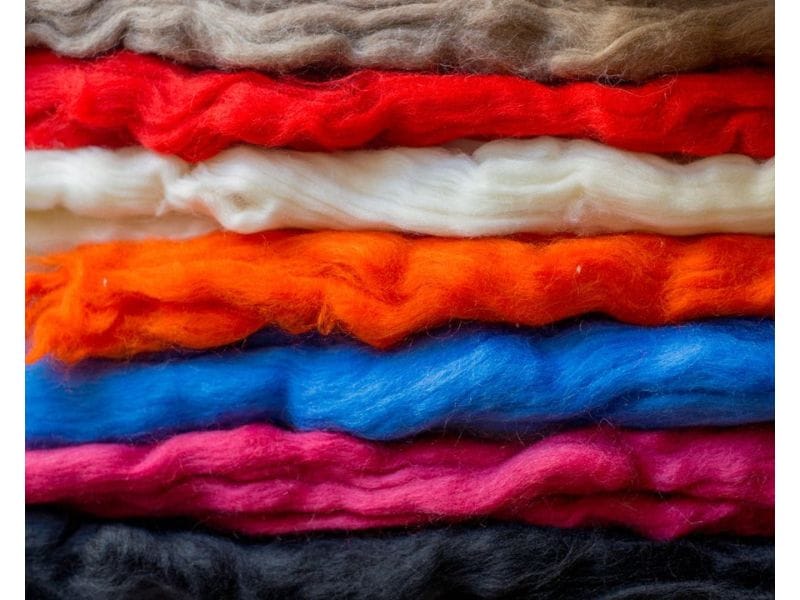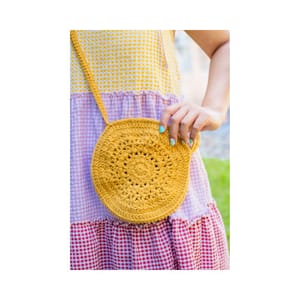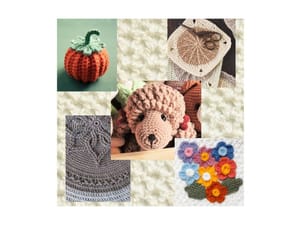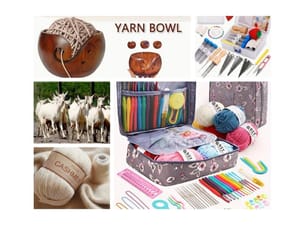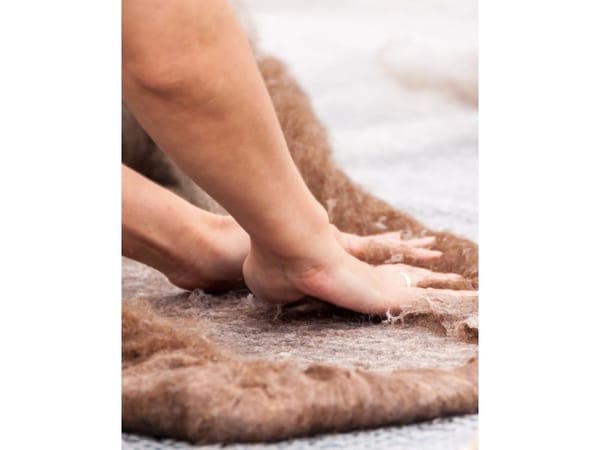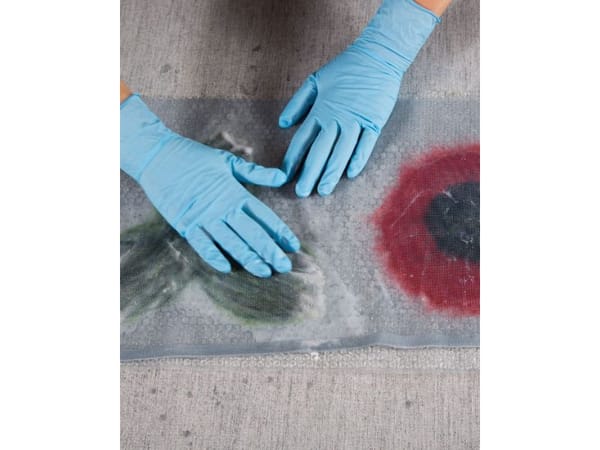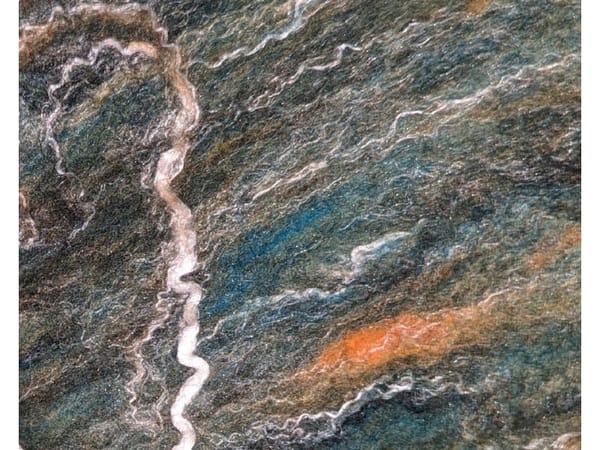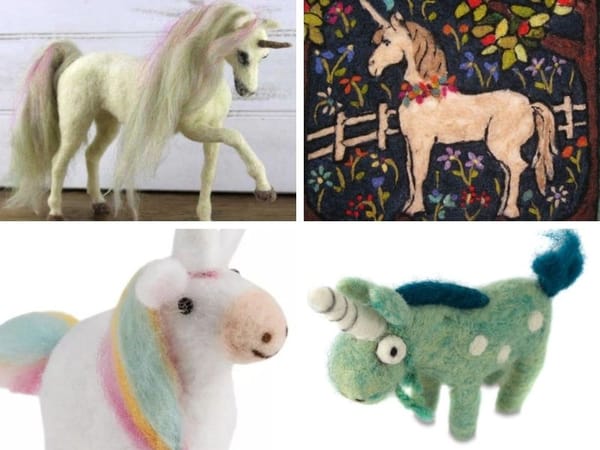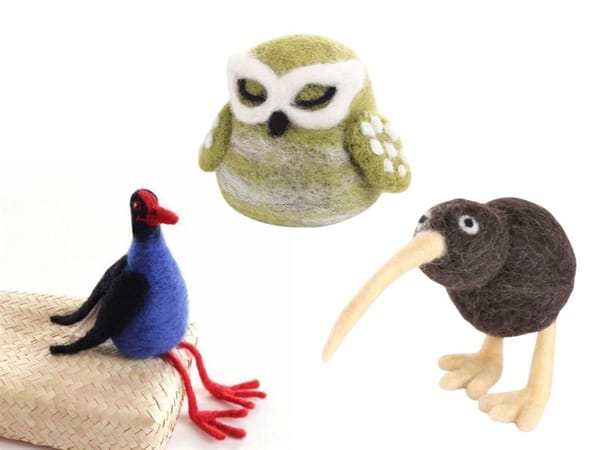Wet felting is an ancient craft that transforms wool into a dense, durable fabric.
Whether you're a seasoned felter or a curious beginner, understanding the different types of wool and their suitability for wet felting is crucial.
This comprehensive guide will help you navigate the world of wool used for felting, ensuring your projects turn out beautifully every time.
Key Takeaways:
- Learn about the best types of wool for wet felting and their unique properties.
- Discover how the wool's staple length and crimp affect the felting process.
- Gain practical tips for selecting the right wool for your specific felting project.
Understanding the Basics of Felting Wool
Felting wool is not just about picking any wool and starting your project. The type of wool you choose can significantly impact the ease of felting and the quality of your finished product. Wool fibers have tiny scales that interlock when agitated in warm soapy water, creating a solid fabric. The best wool for wet felting is one that felts easily and achieves the desired texture and firmness.

The Importance of Staple Length and Crimp
The staple length, or the length of the wool fibers from base to tip, is a critical factor in felting. Longer fibers tend to felt more easily due to more surface area for the fibers to lock together. The crimp, or natural wave of the wool, also plays a role in how well the fibers will interlock during the felting process.
Merino Wool Top: A Popular Choice for Wet Felting
Merino wool top is a favorite among felters for its softness and fine crimp, which allows for quick felting. It comes in a variety of natural colors and dyes beautifully, making it a versatile choice for projects that require a smooth, fine finish like nuno felting.

Coarse Wool vs. Fine Wool
Coarse wool and fine wool have their own advantages in wet felting. Coarse wools, such as grey jacob or curly locks, are sturdy and offer a more textured look, while fine wools like merino provide a softer, more delicate finish. Your project's end use should guide your choice between coarse and fine wools.
Carded Wool: Ready for Felting
Carded wool, also known as wool batting, is wool that has been washed and carded into a fluffy sheet. The fibers are generally going in different directions, which can be beneficial for creating a uniform felt. Carded batts are convenient for larger projects or when a homogenous texture is desired.

Wool Tops: Long Lengths Wrapped in Same Direction
Wool tops are long lengths of wool fibers combed and wrapped in the same direction. The wool tops preparation is ideal for projects that require smooth, even layers of wool, such as in nuno felting. Wool tops can also be split into smaller sections for needle felting kits or small pieces.

The Versatility of Core Wool
Core wool is a type of carded wool often used as the base or first layer in a felting project. It's usually made from coarser wool and is less expensive than finer wools. Core wool helps build volume in needle felting projects and saves on cost, especially for larger pieces.

Incorporating Other Fibers
While wool is the primary material for wet felting, incorporating other fibers like silk and Viscose can add different textures and visual interest to your work. These can be used as a top layer or mixed with wool to create unique effects in your felted pieces.
Choosing Wool for Specific Projects
The best wool for your project depends on what you're creating. For sturdy items like bags or hats, a wool that is coarser might be best. For delicate items like scarves or jewelry, a fine wool or merino top would be more appropriate.
The Joy of Blending Fibers for Unique Textures
When it comes to wet felting, the joy is often found in the blend. Combining different wool types and all the fibers you can imagine opens up a world of textural possibilities. A felting kit that includes a variety of fibers such as silk, bamboo, or flax can add a unique dimension to your projects. The silk can give a subtle sheen, while bamboo adds strength, and flax offers a rustic touch. The key is to experiment with small amounts to see how each fiber behaves when mixed with your base wool.

Blending fibers not only affects the texture but also the color of your final piece. Imagine creating a beautiful wool tapestry with hints of iridescence or a scarf with a delicate gradient effect. By carding together fibers of different hues, you can achieve stunning visual effects that are impossible with a single type of wool. Whether you're using a drum carder or blending by hand, the process of mixing fibers can be as rewarding as the felting itself.

Spinning Your Own Yarn for Wet Felting
For those who love to take their crafting to the next level, spinning your own wool tops (also known as Roving) for wet felting projects can be incredibly fulfilling. Starting with roving or a carded batt, you can spin yarn that's perfectly tailored to your felting needs. Whether you prefer a chunky, rustic yarn for a textured look or a fine, smooth yarn for delicate work, the control is in your hands. Plus, spinning allows you to blend different wool and fibers, creating custom colorways and fiber mixes that are truly one-of-a-kind.

Once you have your hand-spun yarn, it can be incorporated into wet felted projects in a variety of ways. You can lay strands of yarn atop your layout before felting to add lines and swirls of color, or you can felt the yarn directly into the surface for a raised, tactile effect. The beauty of using hand-spun yarn in wet felting is that it adds a personal touch that can't be replicated, making your creations even more special and unique.

Wet Felting Techniques and Wool Types
Different techniques in wet felting may require specific types of wool. For instance, nuno felting, which involves felting wool onto a fabric like silk, works best with fine wool that can easily penetrate the fabric without creating bulk.
Raw Fleece: From Sheep to Felt
Using raw fleece directly from sheep allows for a more hands-on approach. It needs to be thoroughly washed and possibly carded before use, but it can be a cost-effective and rewarding way to source wool for your felting projects.

Preparing Wool for Wet Felting
Before starting your felting project, ensure the wool is clean and free of oils or dirt. Carded wool should be fluffed up, and wool tops might need to be separated into manageable pieces to ensure even felting.
The Role of Color in Felting
Color plays a significant role in the aesthetics of your felted piece. You can choose from natural colors or dyed wools to add vibrancy and detail to your work. Remember that some wools take dye better than others, with merino wool top being particularly well-suited for vibrant colors.

Finishing Touches with Needle Felting
After wet felting, you can add finishing touches with needle felting. This allows for detailed designs and embellishments, as the needle felted fibers can be precisely positioned and felted into the surface of your wet felted piece.
Sourcing Wool from Reputable Wool Suppliers
Quality matters when it comes to using wool for felting. Look for wool suppliers that offer a variety of types and preparations of wool, so you can find exactly what you need for your project. Good suppliers will also provide information about the wool's origin and preparation.

Personal Preferences and Experimentation
Ultimately, your personal preferences will guide your choice of wool for wet felting. Don't be afraid to experiment with all the different wools and fiber laying techniques to find what works best for you. Each felter develops their own style and preferences over time.
The No-Rules Approach to Wool Selection
While there are guidelines for choosing wool for wet felting, there are no hard and fast rules. Some felters enjoy mixing different textures and types of wool to create unique and unexpected results - like this blanket.

I Nuno felted over cheesecloth because silk would have been cost prohibitive for a project this size. This blanket was then finished by needle felting an Alpaca border on both sides.
Layers are as follows:
- Yak
- White Merino wool tops (raised in the US)
- cheesecloth (optional step)
- White Merino wool (raised in the US)
- Brown Merino wool tops (raised in Bulgaria)
Embrace the creative freedom that comes with this craft.
Creating with Confidence
With this knowledge of what kind of wool to use for wet felting, you can approach your next project with confidence. Whether you're making a soft scarf or a sturdy bag, the right wool will help you achieve the results you're aiming for.

Summary
Choosing the right wool for wet felting is essential for achieving the desired outcome in your projects.
From merino wool top for fine, delicate work to coarser wool for robust items, understanding the properties of different wools will guide you to the best choice.
So, next time you're scratching your head wondering what kind of wool to use for wet felting, remember to consider the staple length, crimp, and preparation of the wool, and don't hesitate to mix in other fibers for added texture and detail.
Experimentation and personal preference play a significant role in this craft, so embrace the variety and enjoy the process of creating with wool.

Q: Can I use any type of wool for wet felting?
A: While you can technically use any wool, some types felt better than others. Fine wools like merino are generally preferred for their ease of felting and smooth finish, but coarser wools can also be used for projects that require more texture.
Q: How do I know if a wool is good for wet felting?
A: Good felting wool will have a suitable staple length and crimp, which helps the fibers interlock during the felting process. It should also be clean and free of oils. When in doubt, consult with reputable wool suppliers or experienced felters.
Q: Can I mix different types of wool in one felting project?
A: Yes, mixing different types of wool can add depth and interest to your project. Just be aware that they may felt at different rates, so it's important to test and adjust your technique accordingly.


Images Source: Canva and personal projects

